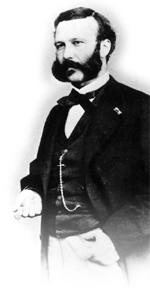| In 1859, on the battlefield
at Solferino, human suffering was met with care and compassion and without
distinction of nationality. The work of the International Red
Cross and Red Crescent Movement has expanded steadily eversince
and now takes the form of a wide range of activities, many of them
the fruit of long experience, others improvised on the spot to meet
emergencies of all kinds, but all grounded incertain humanitarian values.
In the early years of the
Movement's existence, unity of thought was essentially maintained by the
unity of common endeavour. Without being set out in any written agreement,specific
humanitarian values rapidly came to light as constituent elements
of the Movement. As early as 1875 Gustave Moynier spoke offour basic working
principles which the Movement's Societies must observe: foresight, which
means that preparations should be made in advance, in peacetime,
to provide assistanceshould war break out; solidarity, whereby the Societies
undertake to establish mutual ties and to help each other; centralization,
which implies that there is only one Society in each country, but whose
activities extend throughout the entire national territory; and
mutuality, in thesense that care is given to all the wounded andthe sick
irrespective of their nationality.
It was not until 1921 that
the Fundamental Principles - impartiality, political, religiousand economic
independence, the universalityof the Movement and the equality of its members
- were formally put in writing. That was when they were incorporated
into the revisedStatutes of the International Committee of theRed Cross,
the Movement's founding body.
After the Second World War,
the XlXth Session of the League's Board of Governors (Oxford, 1946) adopted
a Declaration confirming the four 1921 principles, supplemented
by another thirteen principles and six rules of application. The 18th International
Conference of the Red Cross (Toronto, 1952) reaffirmed the Oxford
principles. Those principles were not, however, the subject of a
systematic treatise until1955, when Jean Pictet, in his book on the RedCross
Principles, defined and analysed all the values which guide the
work of the Movement.He thus listed seventeen principles divided intotwo
categories: on the one hand, the Fundamental Principles, which express
the very reason for the Movement's existence and inspireand influence all
it does; and on the other hand,the organic principles, which concern the
Movement's structure and how it works.
On the basis of this in-depth
study, the Movement's seven Fundamental
Principles as they stand today were unanimously adopted in 1965 by
the 20th International Conference of the Red Cross, which also decided
that they should be solemnly read out at the opening of every
International Conference.
The 25th International Conference
of the Red Cross (Geneva, 1986) reaffirmed the importance of the Principles
by including them in the Preamble to the Movement's Statutes. The
responsibility of the National Societies to respect and disseminate knowledge
of the Principles was underscored in new statutory provisions, while the
States were called upon to respect at all times the adherence by all the
components of the Movement to the Fundamental Principles. |
|
 Henry Dunant
Henry Dunant
Red
Cross Founder
|